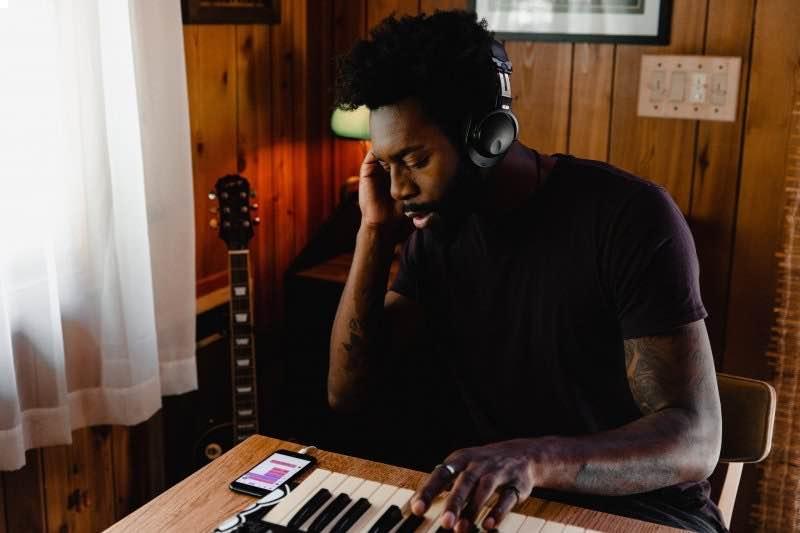If you’ve found your way to this blog, you are probably wondering how to write a song. Perhaps you’re a singer, or you play an instrument, or you fancy yourself to have a way with words. Either way, you’ve come to the right place.
So, Where do I Begin?
You may be asking, “just how do I even get started with songwriting basics?” or “Do I need to play an instrument to write a song?” The short answer is, No! If you have a sense of melody, harmony, and lyric writing, you can write a song. However, playing an instrument, in particular a piano, guitar, or some other string instrument, will make writing that much easier. That’s because you will have an accompaniment from the start, and will have more options for starting the “process” of songwriting.
All You Need to Start is a Little Inspiration
Inspiration is everywhere. Perhaps you hear birds singing in the morning and their melody gets stuck in your head. Perhaps the hum of the cars on the highway has a rhythmic beat that gets your foot tapping. Maybe you are watching a movie or your favorite TV show and a line from your favorite character stands out and floats around in your head.
One of the fundamental songwriting basics is to keep a notebook or voice recorder handy to jot down melodies or lyrics that come to you. This is fairly easy in the year 2020. Likely, you have has access to these things through the phone in your pocket. You can use a combination of the stock apps on your device, or, there are various songwriting apps to use which I will mention later in this blog.
Listening to your favorite music is another way to get inspired. What does the song make you feel? Is it happy or sad? How does the song utilize harmony? Spend some time listening to different styles of music and think about the structure and format of the song. While many popular songs follow the verse, chorus, verse, chorus, bridge, chorus structure, there are variations on this format that you can pick up when you practice active listening.
And of course, perhaps the best way to find inspiration is through your own life experiences. Think of a significant event in your life and take some time to write about it. It doesn’t have to be in song structure just yet. Simply write about what it makes it feel. What was the weather like on that day? What sounds do you remember? Could you smell anything? What about colors? Does the memory make you think of a color? Colors are often linked with emotion. You can be “red with anger” and “green with envy.” When someone is sad, we say they are, “blue.”
Setting the Stage
After you have brainstormed a few ideas, it’s time to get them out. Getting your ideas from inside your head to a piece of paper or tape recorder is one of the most important songwriting basics. There are many different ways to start writing a song, and there is no right or wrong way to do it. You need to find what works best for you.
I personally most often start with picking up my guitar and playing around with a few different chords progressions until I find a hook or lick that I like. Then I start to sing a melody over the progression, usually with nonsense words or open vowels which can help me generate more lyrical ideas.
You may find this helpful as well, rather than writing the lyrics first and then trying to fit the lyrics to the melody. However, sometimes, you may get a good lyrical phrase, with a melody in your head first. If this is the case, you can add the chords/accompaniment around them.
What’s the Big Idea?
Let’s talk about the main idea of your song – the chorus! A chorus can make or break a song. A great chorus will get stuck in your listener’s head and is often the part we find ourselves singing or humming to ourselves throughout the day. Undoubtedly, you want your chorus to stand out! Here’s some tips for how to accomplish that:
- Change up your chord progressions. While some songs have been written using the same four chords, with the same progression and rhythm the whole time,(think “Runaround” by Blues Traveler), generally, it’s a good idea to change things up. This change signals to the listener that something “big” is happening, and brings the listener’s attention back to the song.
- Change up your melody. Bring the melody higher to increase the excitement and emotion of the piece.
- Repeat, repeat, repeat. Repeating the main hook a few times throughout the chorus will be sure to leave an impression.
The Bridge
While not every song needs a bridge, a bridge adds depth to a song and gives you a chance to take the piece in a new direction. Perhaps your song has been about a lost love. Your verses and chorus are pining away for your one and only. The bridge is your chance to take a different angle; express hope that someday you will love again. You could also use this time to change the key of the song as well.
Some Final Tips
Earlier in the article, I mentioned that there are many apps available to assist songwriters in their creativity. One of my favorites is an app called Songwriter’s Pad. The app lets you jot down lyric ideas, record melodies and music, and even has a section for brainstorming lyrical ideas and rhymes. Other apps to consider are Music Memos and Writer’s Session.
If I could leave you with one last piece of advice, it would be this. Songwriting is an art, but it is also a skill, much like learning an instrument or learning how to sing. The more you do it, the better you will get at mastering the songwriting basics.
Not every idea will become a song and not every song will be a hit, but the more you learn to see the world through a songwriter’s eyes the more those creative juices will flow.
Stephanie Avienu


